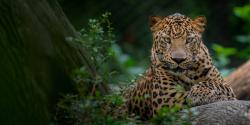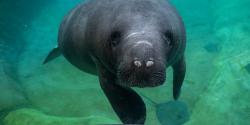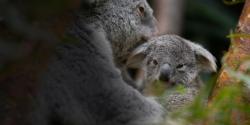Markhor are the largest of the wild goat species.
The common name comes from the Pushto words “mar” and “akhur”, which mean “snake-horn”, referring to the species' large, coiled horns.
Scientific Name: Capra falconeri heptneri
Conservation Status: Near Threatened
Size: Body length ranges from about 4.5 to 6 feet
Weight: Males range from 175 to 240 pounds. Females range from 70 to 110 pounds.














